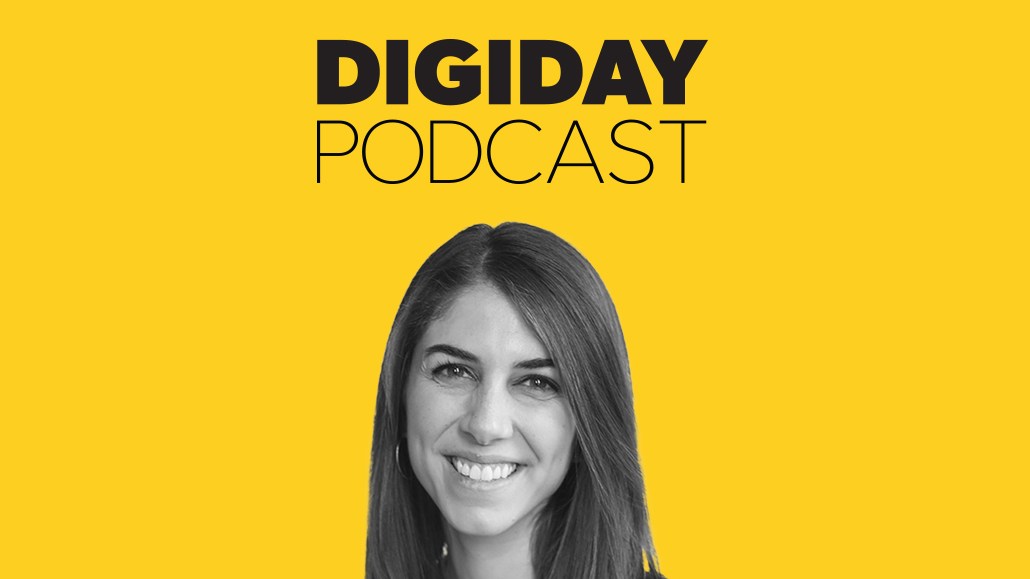Save 50% on a 3-month Digiday+ membership. Ends Dec 5.
‘There’s no e-commerce point-of-sale’: Farmer’s Fridge’s marketing director Liz Mella hones in on non-traditional tactics

Subscribe: Apple Podcasts • Spotify
For the last few months, marketers and advertisers have finally had to reckon with the fallout of Google’s crumbling third-party cookie amid an increasingly fragmented media landscape. Meaning, targeting and measurement are getting harder to do. However, it’s something Liz Mella, director of marketing for Farmer’s Fridge, has been tasked with working through as the food vending company is without an e-commerce point of sale.
With more than 1,000 locations nationwide in airports, hospitals, office buildings, universities and more, Mella said Farmer’s Fridge’s business model has required non-traditional marketing strategies. “We are looking into doing things, like we’re buying media at the exact point of purchase,” she said in a recent interview with Digiday. “But there’s no easy, silver bullet approach to this. It’s really doing a lot of small things to build the amplifier effect of media.”
On this episode of the Digiday Podcast, we caught up with Mella to talk about Farmer’s Fridge’s non-traditional approach to marketing, measurement and media.
Below are highlights from the conversation, which have been lightly edited and condensed for clarity.
Building credibility through third-party channels
With this unique marketing challenge that we’re up against, we’ve really focused on owned and earned media so far in our strategy, and are starting to think about what paid would look like. On the earned side, we’ve invested a lot in our earned presence and are really proud of what we’ve been able to do there. Our strategy there is to build credibility through third-party channels. So whether that’s things like racking up awards, or feeding local TV anchors, doing live taste tests, [it’s] just getting that external validation to help consumers realize that this is a delicious option for them when they are on the go. On the earned side, it could look anything like local media segments. We do a lot of TV, trade media, as well as we’ll do more out of the box things.
Ad position: web_incontent_pos1
Keeping up with content churn
Most of our social work is done through in-house creators, but it absolutely is a feed the beast thing. We’re always candidly trying to figure out how much is the right cadence for us to post. Something I always try to lean on leading a social team is UGC [user generated content], or as I like to call it “making others do the work for you.” We have such loyal fans. We’re getting tagged every single day. We’re getting posted about. People are writing funny tweets about us. And so resurfacing a lot of that content on our own brand page is what I try to do because it builds that external credibility. We don’t have to be shooting 24/7 ourselves and honestly, it does pretty well.
Measurement through fragmentation
For the purpose of this discussion, the point-of-sale is through the friend itself. When you think of that, as a brick-and-mortar business, I’m driving foot traffic to these brick-and-mortar locations, rather than clicks to a website, which is just a total flip of how you think of marketing. When I talk to a lot of vendors, they’re like, “Whoa. There’s no e-commerce point-of-sale.” So all of a sudden, the attribution modeling that is so common to prove ROI on marketing spend is not existent for us. With that, we’ve had to really reevaluate how we run our paid media. Doing tests like programmatic has been something that we look at, but figuring out how to measure that is a struggle. We think a lot about how to do geo-targeted ads. But with 1,200 locations, it would be so geo-targeted to these very specific vending machines that we haven’t completely cracked that nut. One thing we are looking at is strategic out-of-home.
More in Marketing

Ulta, Best Buy and Adidas dominate AI holiday shopping mentions
The brands that are seeing the biggest boost from this shift in consumer behavior are some of the biggest retailers.

U.K. retailer Boots leads brand efforts to invest in ad creative’s data layer
For media dollars to make an impact, brands need ad creative that actually hits. More CMOs are investing in pre- and post-flight measurement.

‘AI is permeating everything we do’: How Guitar Center developed 2 AI tools this year
This summer, the company launched a chatbot called Rig Advisor to help customers find the right instruments and products.
Ad position: web_bfu



